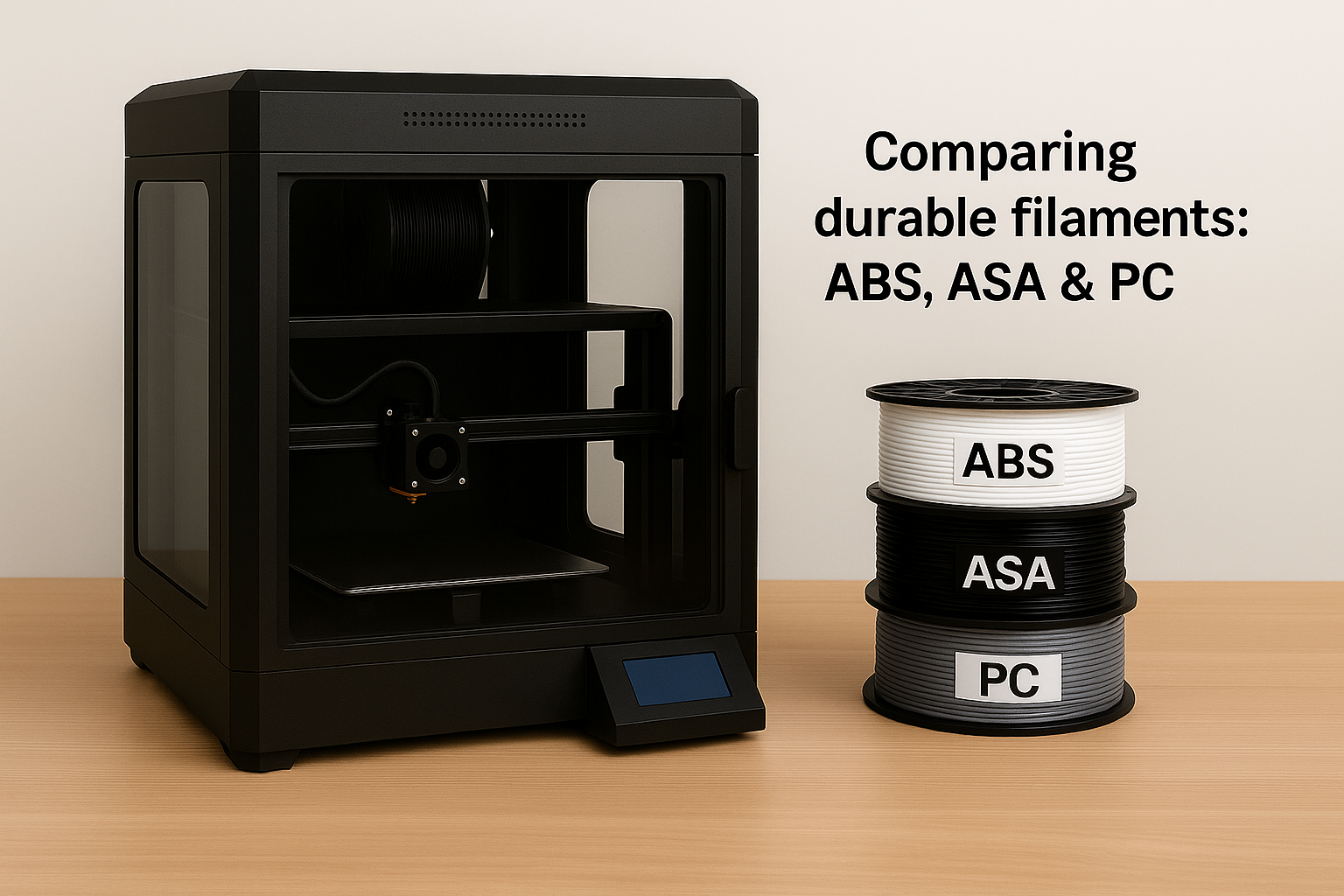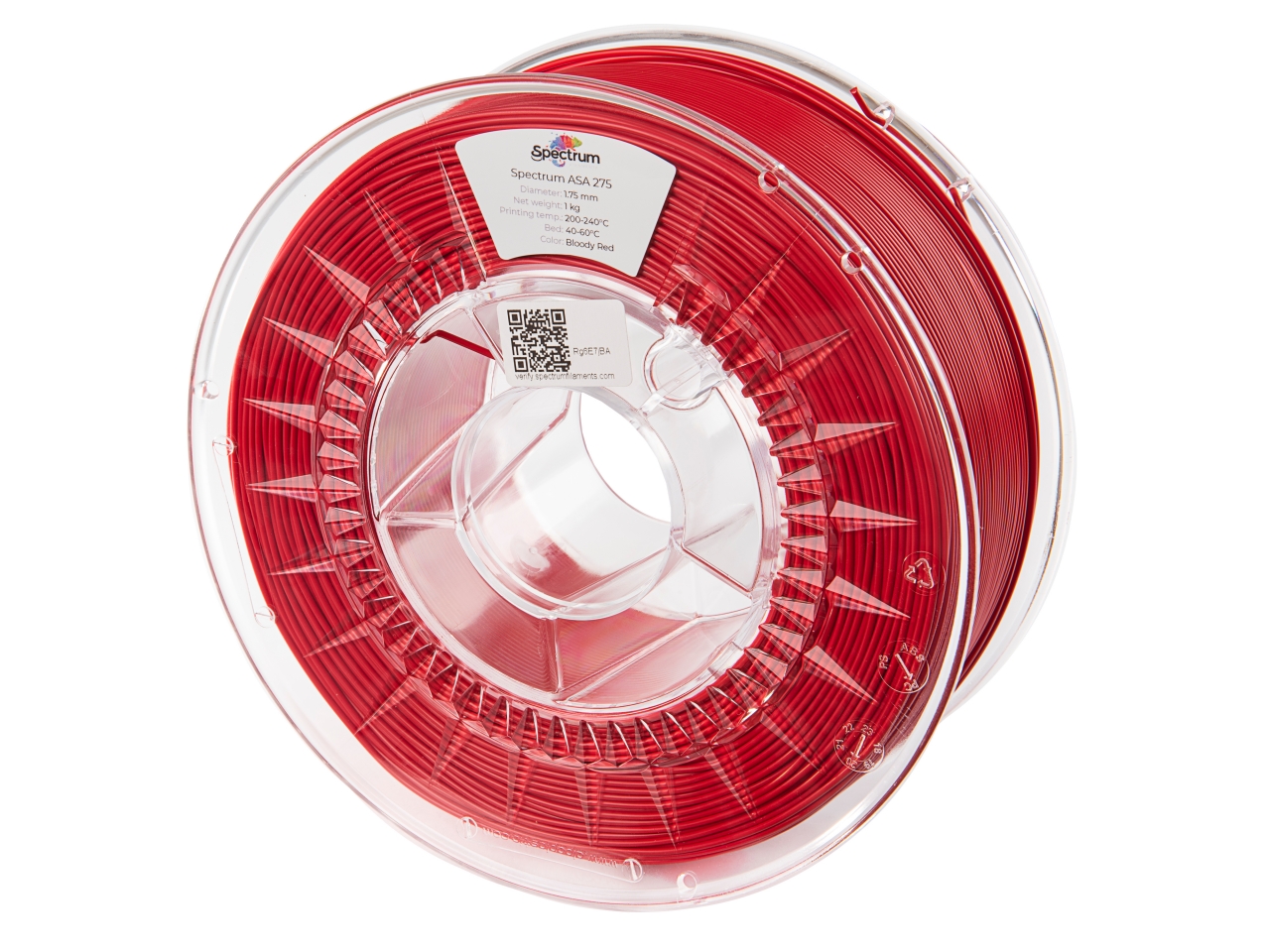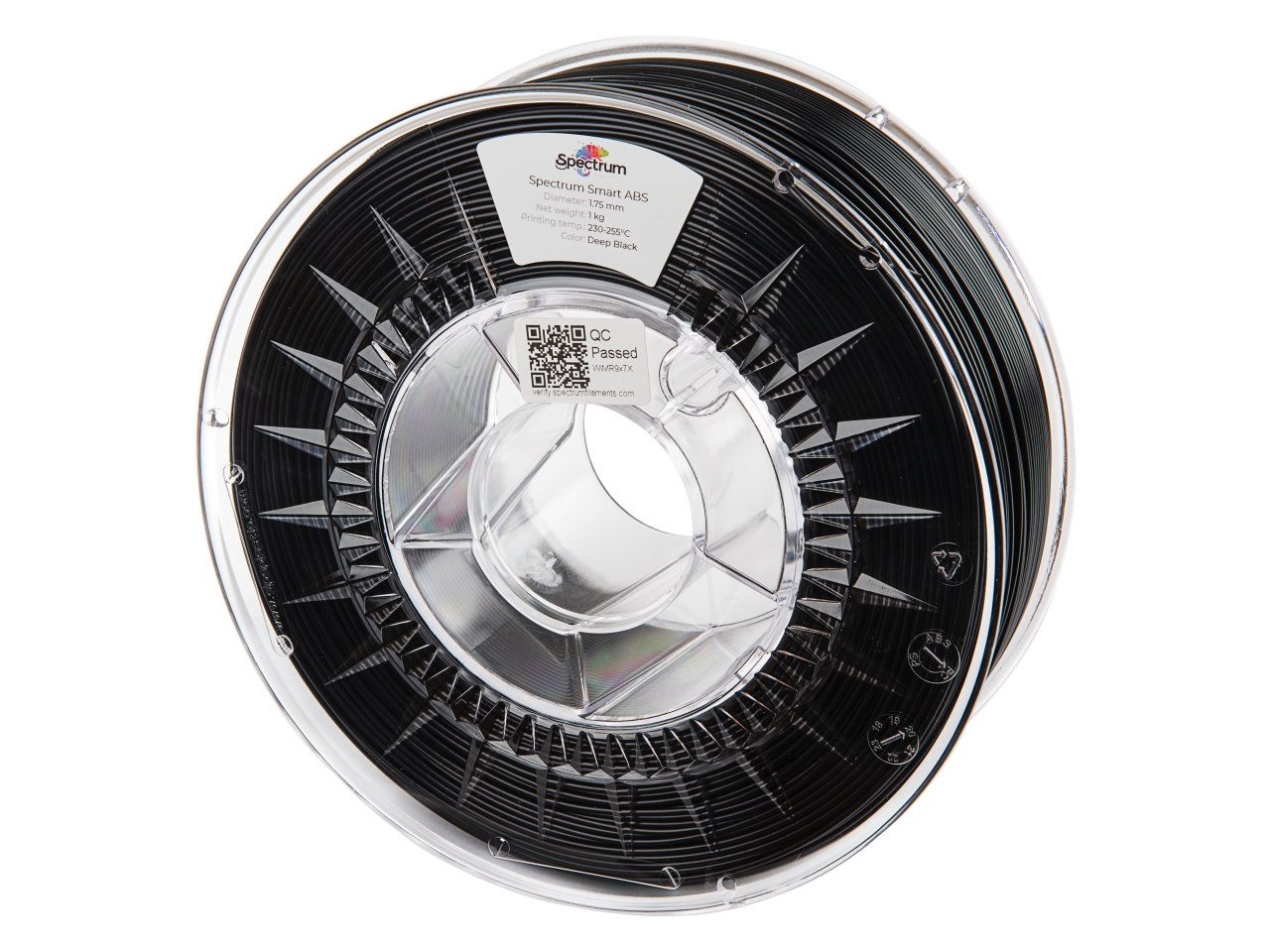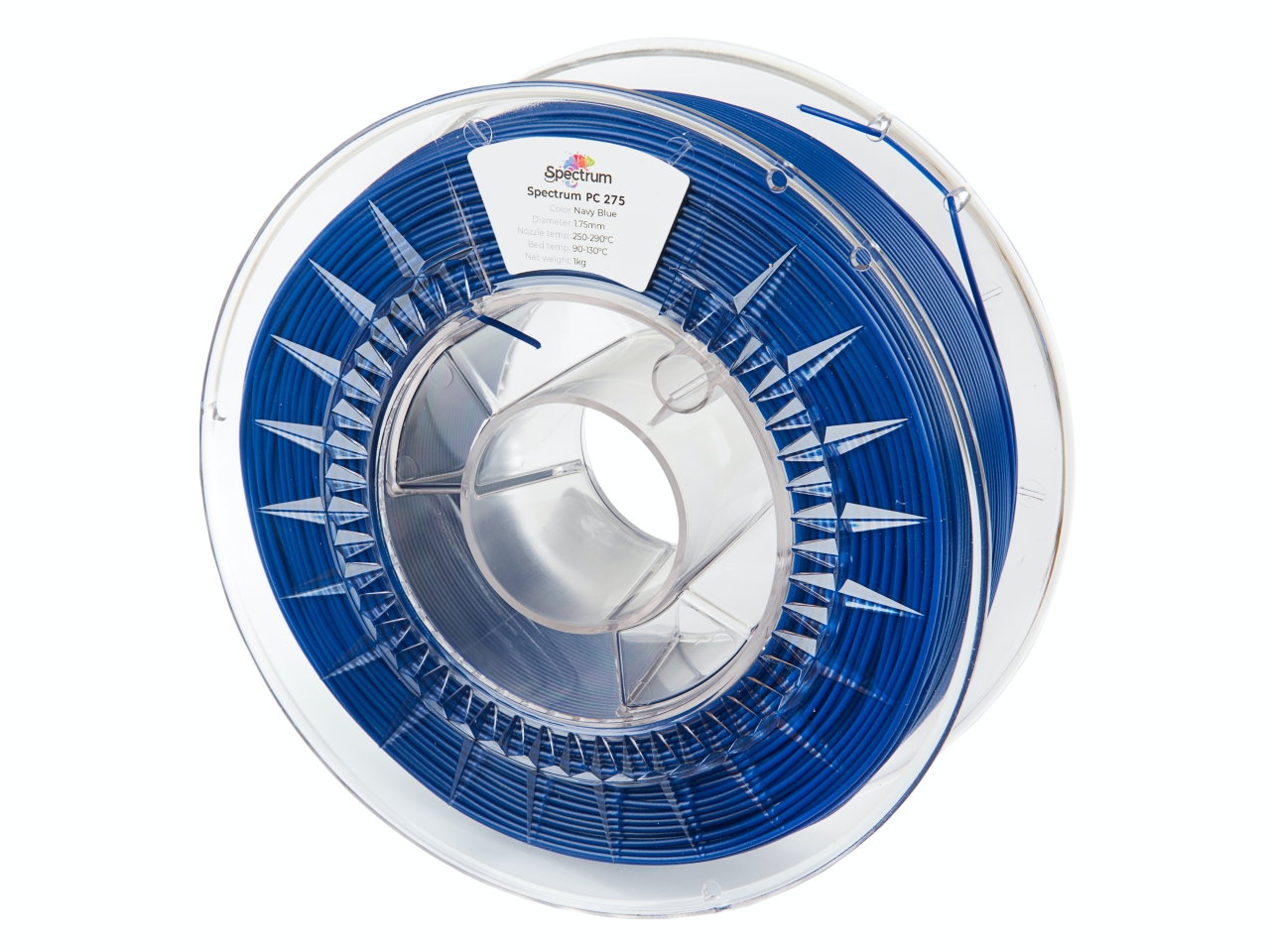Comparing durable filaments: ABS, ASA, PC.

In the world of 3D printing, not all filaments are created equal; especially when it comes to durability and specific functionality. For engineers, hobbyists, and manufacturers seeking strength, heat resistance, and weatherproofing, three materials stand out: ASA (Acrylic Styrene Acrylonitrile), ABS (Acrylonitrile Butadiene Styrene), and PC (Polycarbonate). Each offers unique properties that make them suitable for demanding applications, but knowing when to use each one can make the difference between a failed print and a long-lasting part. These thermoplastics are widely used for engineering-grade prints and functional prototypes. This article compares their key properties to help you decide which filament is best suited for your needs.
 |
 |
 |
Below are the key points or criteria to consider on when to use the three stated materials.
- Mechanical Strength
- Heat Resistance
- Printability
- Cost and Availability
Let us run-through the 4 criteria one by one for the comparison of the materials we have in this article.
Mechanical Strength
ABS is known for its decent strength and toughness, making it a common choice for enclosures, tools, and automotive parts.
ASA offers strength comparable to ABS but with better environmental resistance, especially in UV exposure. And ASA has less warpage and odor compared to ABS.
PC (Polycarbonate) surpasses both in strength and impact resistance, making it ideal for high-load mechanical parts and safety gear. However, it requires higher print temperatures and controlled conditions
Heat Resistance
ABS can withstand temperatures up to around 100°C, which is good for many indoor functional uses. Prolonged exposure to UV rays/sunlight might degrade its strength overtime.
ASA has slightly better thermal resistance, maintaining shape and performance in direct sunlight or outdoor environments.
PC offers the highest heat resistance, handling temperatures above 120°C, ideal for high-temperature applications like industrial parts that face extreme heat.
Printability
ABS requires a heated bed, enclosed chamber, and careful temperature control to avoid warping and layer separation. While printing, ABS emits odor that might be unpleasant, proper filter or ventilation is required for this printing.
ASA prints similarly to ABS but with less warping and fewer odors, although proper ventilation is still important.
PC is the most challenging to print. It demands high nozzle temperatures (250–300°C), a fully enclosed printer, and sometimes even a heated build chamber for consistent results. PC is prone to warping and delamination, be ready for the challenges of printing PC.
Cost and Availability
ABS is affordable and compatible with many mid-range 3D printers, making it ideal for prototyping and functional parts. With its availability and cost, it is the go-to of the budget conscious 3D Printer users.
ASA costs slightly more but provides better long-term performance for outdoor use such as automotive parts, garden decors, drone parts, etc.
PC is the most expensive and requires advanced printer capabilities, but delivers superior performance when strength and heat resistance are non-negotiable. Perfect applications would be those of industry application and extensive outdoor use for its performance.
Below is a more detailed and simplified comparison of the materials we have. Check out the comparative matrix below.
|
ASA |
ABS |
PC (Polycarbonate) |
|
|
Strength |
High (similar to ABS) |
High |
Very High |
|
Impact Resistance |
Good |
Good |
Excellent |
|
Heat Resistance |
~100–105°C |
~95–100°C |
~120–135°C |
|
Nozzle Temperature |
240–260°C |
230–250°C |
260–310°C |
|
Bed Temperature |
90–110°C |
90–110°C |
100–120°C |
|
Print Difficulty |
Moderate (less warping than ABS) |
Moderate to Difficult (warps easily) |
Difficult (high temp + enclosure needed) |
|
Warping Tendency |
Low to Moderate |
High |
High |
|
Surface Finish |
Matte to satin, good detail retention |
Slightly glossy |
Glossy to translucent, very strong |
|
Outdoor Suitability |
Excellent |
Poor |
Moderate |
|
Odor While Printing |
Moderate |
Strong |
Moderate to strong |
|
Common Uses |
Outdoor parts, enclosures, automotive |
Prototypes, toys, casings |
Mechanical parts, lighting, industrial |
|
Printer Requirements |
Enclosure recommended |
Enclosure recommended |
Enclosure + high-temp nozzle required |
To know more about the common durable filaments in this article, click the link below With the three listed materials we have compared, the key is knowing when to use and on what application you should be aware of in picking the right material. By understanding the strengths and limitation of those materials, you’ll be able to bring out the best in your 3D Printing projects’ durability, ease of use and cost effectiveness. Since you are now equipped with the